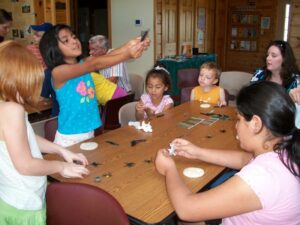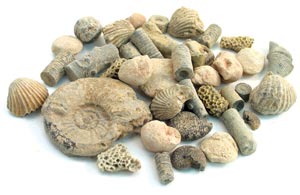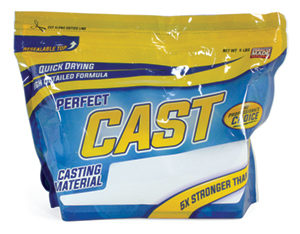 by: Michelle Bertke
by: Michelle Bertke
Both the young and old have a special fascination with dinosaurs. From the small Nemicolopterus to the larger Sauroposeidon, dinosaurs were magnificent and majestic creatures. This is a topic students want to learn and adults want to teach. Luckily, there are many at-home experiments and activities that parents can do to foster their children’s love for dinosaurs.
Impression Fossils
 Impression fossils are one way that animals and plants, which are long since gone from this world, leave their mark. One easy way to show how imprint fossils are formed is with play dough and plastic creatures. Students can use the play dough (which is easily homemade) as a medium in which to press the plastic creatures. This will leave an impression with a certain amount of detail. Have the students compare the fossil imprint with their creature or mix up the imprints and play a matching game. Use this activity to illustrate what can be determined from an imprint fossil (size or texture) and what cannot be determined (color).
Impression fossils are one way that animals and plants, which are long since gone from this world, leave their mark. One easy way to show how imprint fossils are formed is with play dough and plastic creatures. Students can use the play dough (which is easily homemade) as a medium in which to press the plastic creatures. This will leave an impression with a certain amount of detail. Have the students compare the fossil imprint with their creature or mix up the imprints and play a matching game. Use this activity to illustrate what can be determined from an imprint fossil (size or texture) and what cannot be determined (color).
Layers of the Earth
To take the discussion of fossils to a next level, an easy at-home activity is a display of the layers of the earth. In order to create this you will need a plastic or glass container and different substrates to layer. These can include sugar, coffee, rocks, dirt, or aquarium rocks. Start the layering with finer material such as the sugar or coffee. If you begin with the rocks, the finer dirt will fill in the cracks and the layers will become indistinguishable. As you layer the material put small objects in the layers such as fossils or plastic creatures. This activity not only illustrates that the earth is made of layers but archeologists can determine where the fossils are located how old the fossils are. In order help determine age you can add a diagram on one side of your container illustrating this point.
Digging Fossils
 Parents can take dinosaur learning even further with at-home fossil digs and fossil sorting. This is a great activity to help kids appreciate the intricacy and excitement of discovering fossils in their own home. To make your own fossil dig you will need soil, plaster (that can be found in most craft stores), and fossils. The consistency of the fossil dig will be based on the ratio of dirt to plaster mix. The more dirt you have the easier it will be to dig the fossils out.
Parents can take dinosaur learning even further with at-home fossil digs and fossil sorting. This is a great activity to help kids appreciate the intricacy and excitement of discovering fossils in their own home. To make your own fossil dig you will need soil, plaster (that can be found in most craft stores), and fossils. The consistency of the fossil dig will be based on the ratio of dirt to plaster mix. The more dirt you have the easier it will be to dig the fossils out.
I recommend basing the mix on the amount of time you have allotted for the activity and the age of the group. Once the ratio is decided on, mix plaster, dirt, and water together to create a mud with a consistency that allows it to flow without being too runny. Pour the paste mix into individual disposable container. Once the containers are filled, push fossils into the mix and set aside to dry. Once dry, the fossils can be dug out with utensils and tools, from plastic knives to paint brushes. In addition to digging fossils, kids can sort the fossils with supplied fossil sorting sheets in order to better appreciate the role of archeologists.
